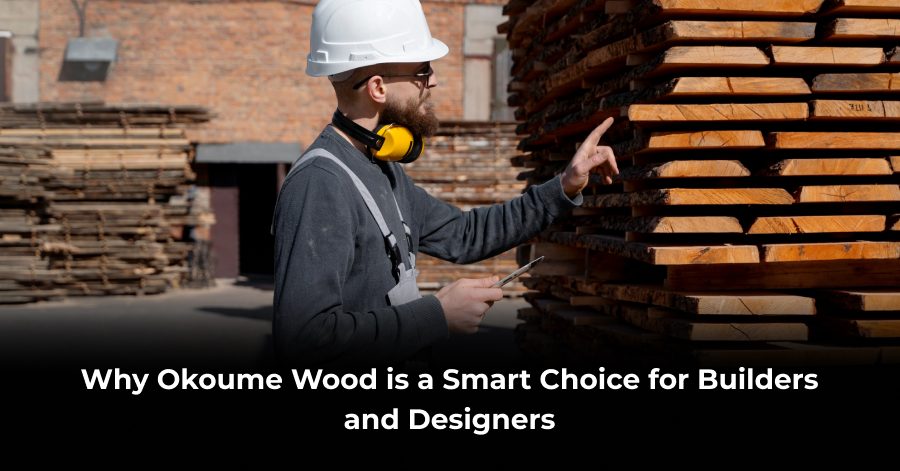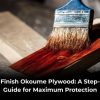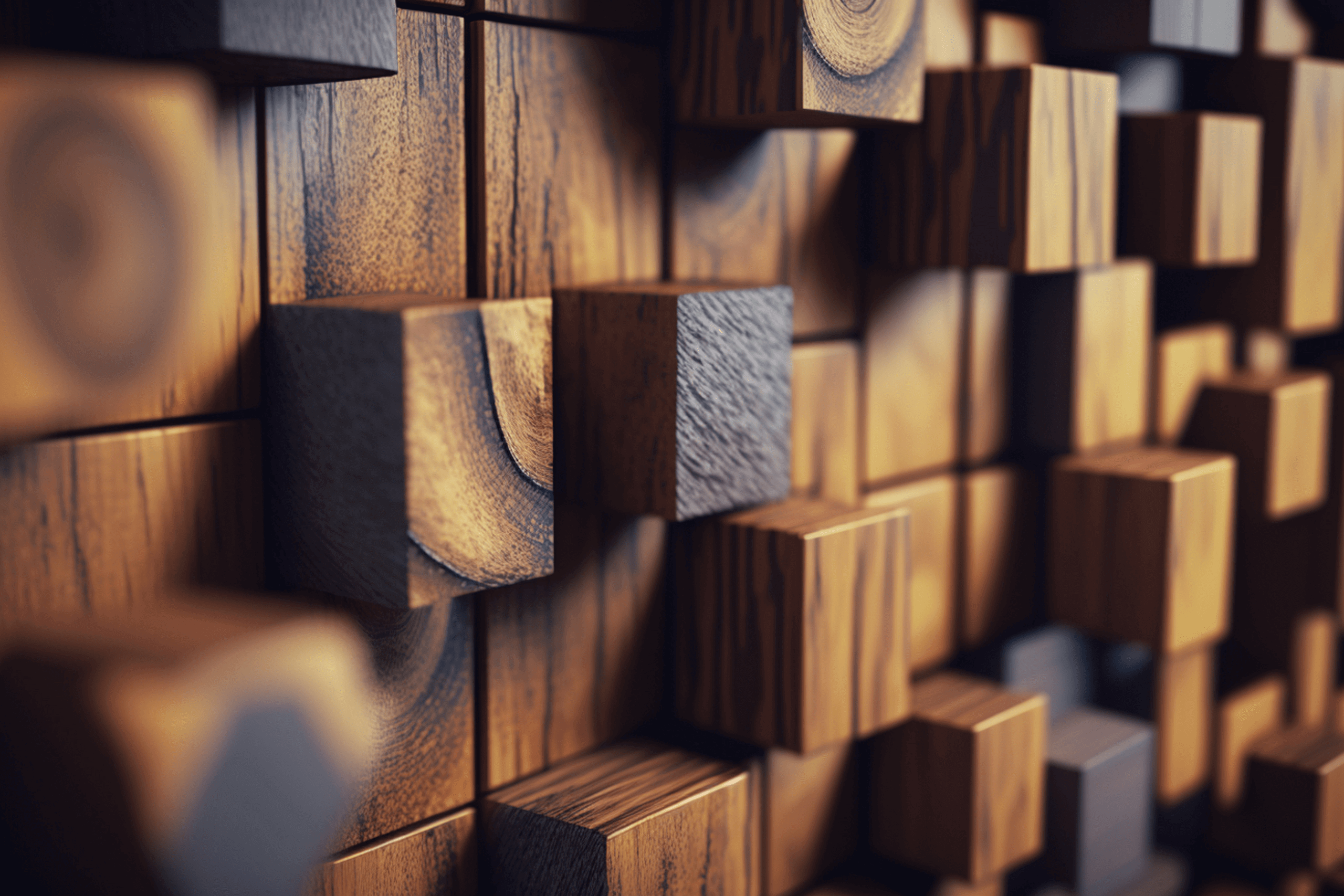What Makes a Wood Type “Smart” for Industry Use?
In the world of construction, furniture design, and marine-grade materials, the choice of wood plays a key role in product quality, cost-efficiency, and durability. One wood type that continues to gain attention among professionals is Okoume wood. Its balance of lightweight performance, visual appeal, and versatility makes it an ideal material for a range of industrial applications.
This blog will explore why Okoume wood has become a top choice for builders, designers, and manufacturers, especially when compared to other common options like birch plywood.
Understanding Okoume Wood: A Quick Overview
Okoume (Aucoumea klaineana) is a tropical hardwood native to Central Africa, primarily harvested from Gabon. It is light pinkish-brown in color, has a uniform texture, and a fine grain that finishes smoothly. Because of its lightweight nature and easy workability, it is commonly used in applications where visual consistency and reduced weight are critical.
Typical forms include:
- Solid Okoume timber
- Okoume plywood
- Okoume face veneer
Key Properties That Make Okoume Stand Out
- Lightweight Without Compromising Strength
Okoume wood is significantly lighter than hardwoods like oak or birch. This makes it easier to handle during manufacturing and installation, especially in large-scale builds. It retains enough structural strength to perform well under stress, making it ideal for boat building, cabinetry, and wall paneling. - Workability
One of the biggest advantages for designers is how easily Okoume can be cut, shaped, sanded, and glued. Its smooth grain results in a clean finish, which reduces post-processing time and increases production efficiency. - Finish Quality
Okoume has a naturally smooth and attractive surface. When used as a face veneer, it provides a consistent visual tone that pairs well with both stains and paints, allowing flexibility in product design. - Cost-Effectiveness
Compared to marine-grade plywood alternatives, Okoume offers a good price-to-performance ratio. It’s less expensive than teak or mahogany while offering sufficient water resistance when properly treated. - Sustainability
With many suppliers now offering FSC-certified Okoume, it becomes a responsible choice for brands prioritizing sustainability.
Okoume Plywood vs Birch Plywood: A Direct Comparison
| Feature | Okoume Plywood | Birch Plywood |
| Weight | Lighter | Heavier |
| Grain Appearance | Smooth and uniform | Tight and more pronounced |
| Workability | Very easy to cut/shape | Requires sharper tools |
| Cost | More affordable | Mid to high range |
| Applications | Marine, furniture, interior panels | Cabinets, flooring, structural work |
While birch remains a solid all-rounder in many markets, Okoume excels when weight reduction and aesthetic flexibility are key requirements. Builders working on mobile units, boats, or aircraft interiors often choose Okoume for its ease of use and reduced load.
Common Use Cases of Okoume in Industry
- Marine Applications
Okoume marine plywood is prized for its water resistance and lightweight build, making it a frequent choice in boat construction. It’s typically sealed with epoxy resin for added protection. - Furniture Manufacturing
Designers prefer Okoume for minimalist furniture pieces, particularly where cost and ease of shaping are important. Its ability to take finishes well also helps in customization. - Interior Wall Paneling
Thanks to its smooth surface, Okoume face veneer is widely used in luxury interior panels in offices, hotels, and premium residential spaces. - Vehicle and Aircraft Interiors
The reduced weight of Okoume plywood makes it ideal for use in vehicle panels and aircraft interiors, where every kilogram saved contributes to performance.
Limitations and Considerations
While Okoume offers multiple advantages, it’s not ideal for every situation:
- It is less durable than hardwoods like teak when exposed to harsh outdoor elements without treatment.
- Needs to be sealed for use in moisture-heavy environments.
- Surface dent resistance is lower compared to denser woods.
Still, when used correctly and in the right environment, it outperforms many traditional choices in both cost and efficiency.
Why Builders and Designers Are Shifting to Okoume
Trends show a clear rise in the use of Okoume in modern manufacturing. The balance of lightweight structure and elegant appearance allows for diverse design possibilities without inflating project budgets. Also, its growing availability in certified sustainable forms adds to its appeal for environmentally-conscious professionals.
Designers appreciate the material’s responsiveness to creative shaping, while builders rely on its predictable performance under load. This dual strength makes it one of the most adaptable wood options available in today’s global market.
How to Source Quality Okoume Materials
If you’re planning to incorporate Okoume into your production or construction line, make sure to:
- Verify supplier certifications (FSC/PEFC)
- Request moisture content reports
- Check veneer thickness consistency for large-scale orders
Many top suppliers now offer ready-to-ship Okoume plywood and veneer sheets with customization options.
Conclusion: Is Okoume the Right Fit for Your Next Project?
Whether you’re designing interior panels, building marine equipment, or crafting furniture, Okoume wood brings a lot to the table. It provides a unique balance of strength, lightness, and finish quality at a cost that works well for commercial use.
For industries looking to scale while maintaining product integrity and aesthetics, Okoume is clearly a smart material investment.
CTA: Let’s Talk About Your Requirements
Want to explore Okoume options for your next project? Contact our team to get specifications, samples, and custom pricing for plywood, veneer, or solid timber.






